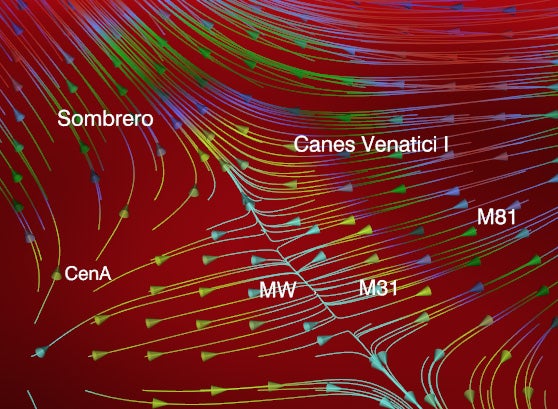These dwarf galaxies are often found swarming around larger hosts like our Milky Way. Since they are dim, they are hard to detect and are thus found almost exclusively in our cosmic neighborhood. A particularly fascinating aspect of their existence is that near the Milky Way and at least two of our closest neighbors — the Andromeda and Centaurus A galaxies — these satellites don’t just fly around randomly, but they are instead compressed onto vast, flat, possibly spinning planes. Such structures are not a naive outcome of the cold dark matter model that most cosmologists believe is responsible for how the universe forms galaxies. These structures are thus a challenge to the current doctrine.
One possibility is that these small galaxies echo the geometry of structure on much greater scales. “This is the first time we have had observational verification that large filamentary superhighways are channeling dwarf galaxies across the cosmos along magnificent bridges of dark matter,” Libeskind said. This cosmic “superhighway” gives the speeding satellites an off ramp along which they can be beamed toward the Milky Way, Andromeda, and Centaurus A. “The fact that this galactic bridge can affect the dwarf galaxies around us is impressive, given the difference in scale between the two — the planes of dwarfs are around 1 percent of the size of the galactic bridge to Virgo.”










